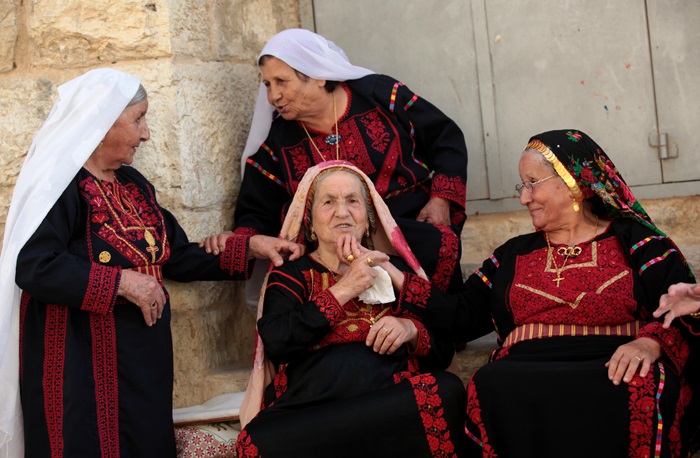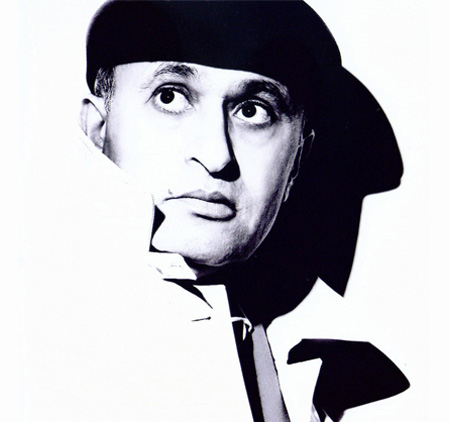
I remember coming across the above picture (by the brilliant Palestinian photojournalist Osama Silwadi) a few years ago, featured in a Middle Eastern newspaper. I never read the article that went with it, as I preferred to spend my time studying the scene depicted in the picture.
First, I was reminded of the beautiful and intricate work that goes into embroidering the Palestinian dresses as worn by the ladies in the picture. I will say more about that shortly.
I then wondered what the four ladies were talking about. Were they reminiscing about the ‘good old days’, correcting each other on peripheral details of dates, times, who said what to whom? Perhaps they were exchanging secret tips on cookery, baking, or even embroidery. It could easily be a risqué conversation about men they had fancied in their youth or even in the present time. I had a lot of fun letting my imagination run wild.
Next, I noted the intimacy between them. No doubt they had known each other for many, many years and seem to be comfortable and happy in each other’s company. I hoped they had known each other since their very early childhood. The lady in the middle seemed to be the captain of the team, where she is backed by one of the other ladies; the lady on the left is resting her hand over the captain’s shoulder just to be sure her captain is okay; and the one on the right is affectionately stroking her chin, something we only do when we are very close to another person.
Back to the dresses. Each lady’s attire is similar to the other three but different in certain details. This could be the type of head dress they wore, the patterns used or the use of gold sovereigns worn around the head dress. The fascinating thing about Palestinian embroidery is that it has its roots in the distant past but is never shy to borrow from modern designs to make the overall look unique and a subject of envy by others.
Further, the women of most Palestinian towns and villages competed amongst themselves but collaborated to create their own region’s style that can be identified by those who are in the know. In 2011 a seminal 500-pages book called ‘Threads of Identity’ on the Palestinian costumes was painstakingly and lovingly produced by an important Palestinian woman called ‘Widad Kamel Kawar’ who for decades acquired a massive collection of Palestinian dresses going back to the 19th Century and up to present day.
Ms. Kawar is a passionate chronicler of Palestinian heritage, mainly as depicted by the clothing worn daily or the more elaborate dresses worn on special occasions, such as weddings and festivals. As an introduction to the Threads of Identity, Ms. Kawar wrote:
“My collection is more than a statement of indignation at how the world continues to ignore the Palestinian people’s rights and distorts Arab culture. My aim is to capture the complexity of Palestinian society through these personal histories and bitter-sweet memories of the women who owned the dresses”
If you have not come across this book, I urge you to look it up, irrespective of whether you are a man or woman. The writing and explanations about the various styles is quite fascinating and enlightening. However, the stars of the book are the various dresses and garments Ms. Kawar curated for the reader.
These days you can buy a ‘Palestinian’ national dress in any shop or even on-line. Most of them are machine produced and cost a fraction of the hand-embroidered dresses which can compare to haute couture garments. The problem here is that you buy what you think looks nice in your eyes, and there is nothing wrong with that however, what you are doing is ignoring the significance of the region the pattern of the dress depicts. Compare this with the Scottish tartan cloth used in making the kilt, where each pattern belongs to a specific clan and proper tartan shops will only sell you the tartan of the clan you originated from. I have no doubt you can find sources that will sell you whatever tartan design you like at a more reasonable price than the official shops and they too do not care if you were Scottish, Scandinavian, Middle Eastern or from Mars.
Being part of our heritage and national identity, I wish we had more Widad Kawar characters to protect the dignity of the garments as the Scots do with their tartan. I guess we have more pressing and immediate issues to deal with such as surviving the negative propaganda and disenfranchisement perpetrated by our detractors.
Finally, I must go back to the picture of those four redoubtable ladies. I cut the picture out and had it framed, which I keep to this day in my office. There have always been attempts to create divisions within the Palestinian community on various questionable and dishonourable basis like Gaza and the West Bank or Muslims and Christians and so on. Look at the picture very closely, the women could be any four women from any part of Palestine from as far north as Acre (Acca) to Eilat on the Red Sea. They actually happen to be Christian ladies from the famous town of Bir Zeit near Ramallah. What gives them away as Christians is simply the addition of the crucifix to their accoutrement. Long may they live in good health.


